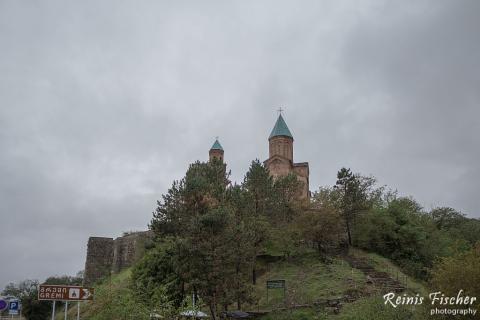Another very interesting tourist attraction in Kakheti close to Kvareli - Meet the Gremi Monastery complex. Features rich history and very spectacular views.
For the first time I visited Gremi monastery complex back in 2014, when we booked a private tour from Hotel Royal Batoni. Next time I was here was during another short one day trip around region Kakheti together with my mom. This definitely means there are places in Georgia where it is worth to return.
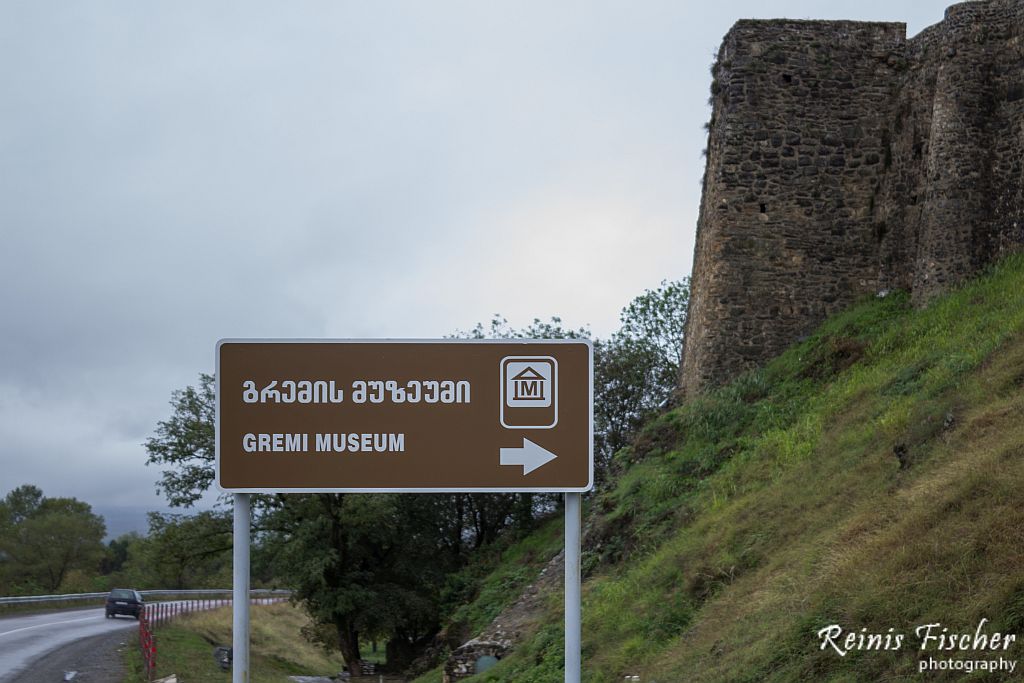
Impressive fortification walls at Gremi
The monastery complex is located just right next to the highway making it impossible to miss this place. It is worth to mention that since 2007 the monuments of Gremi have been proposed for inclusion into the UNESCO World Heritage Sites.
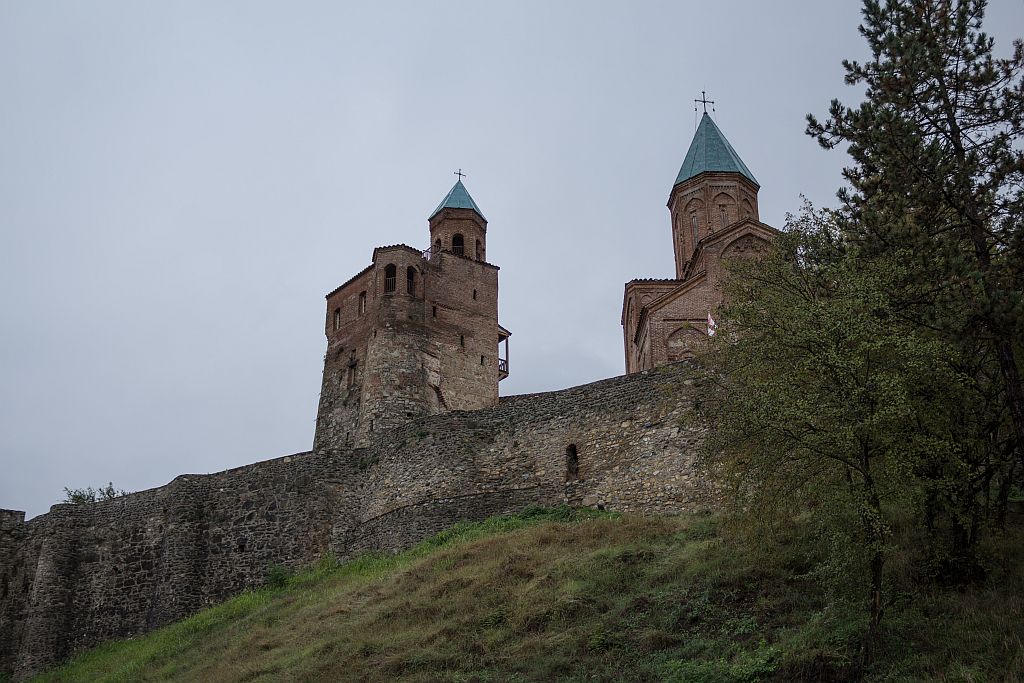
Gremi monastery complex
Gremi was the capital of the Kingdom of Kakheti in the 16th and 17th centuries. Founded by Levan of Kakheti, it functioned as a lively trading town on the Silk Road and royal residence until being razed to the ground by the armies of Shah Abbas I of Persiain 1615.

The church has been built in 1565 by King Levan - The King of Kakheti
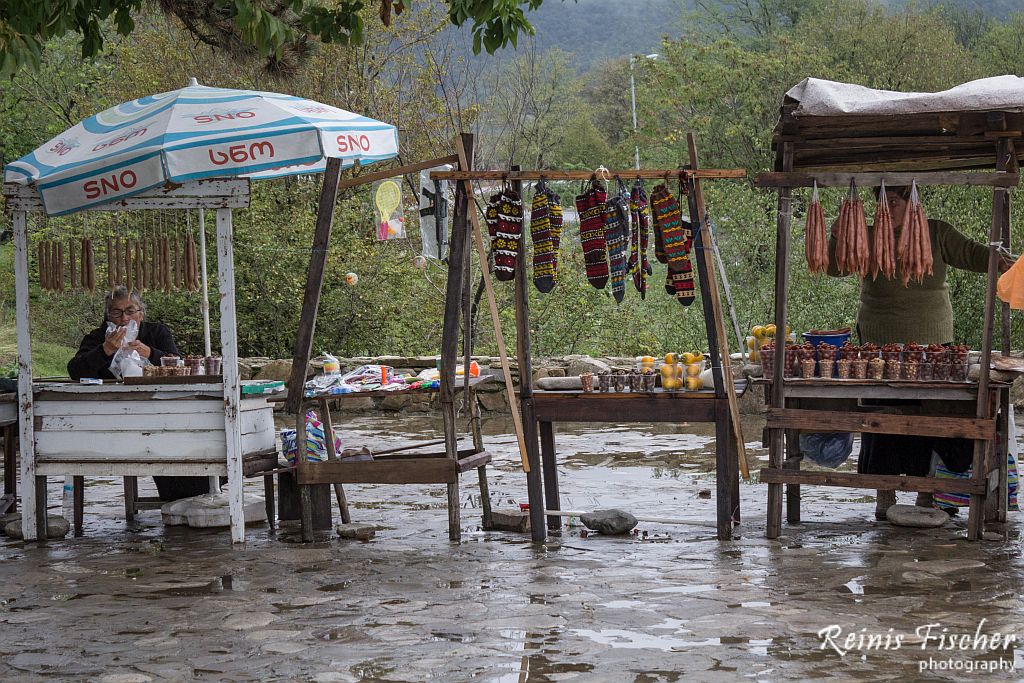
Local merchandise near Greami monastery complex
Here you can buy some typical Georgian souvenirs: churchelas, nuts and evens socks.

Georgian script at Gremi monastery complex
After almost 5 years of Living in this amazing country Georgia, I still haven't mastered Georgian script. On the other hand if you are desperate to translate or transcript Georgian script - you can choose this translation company.
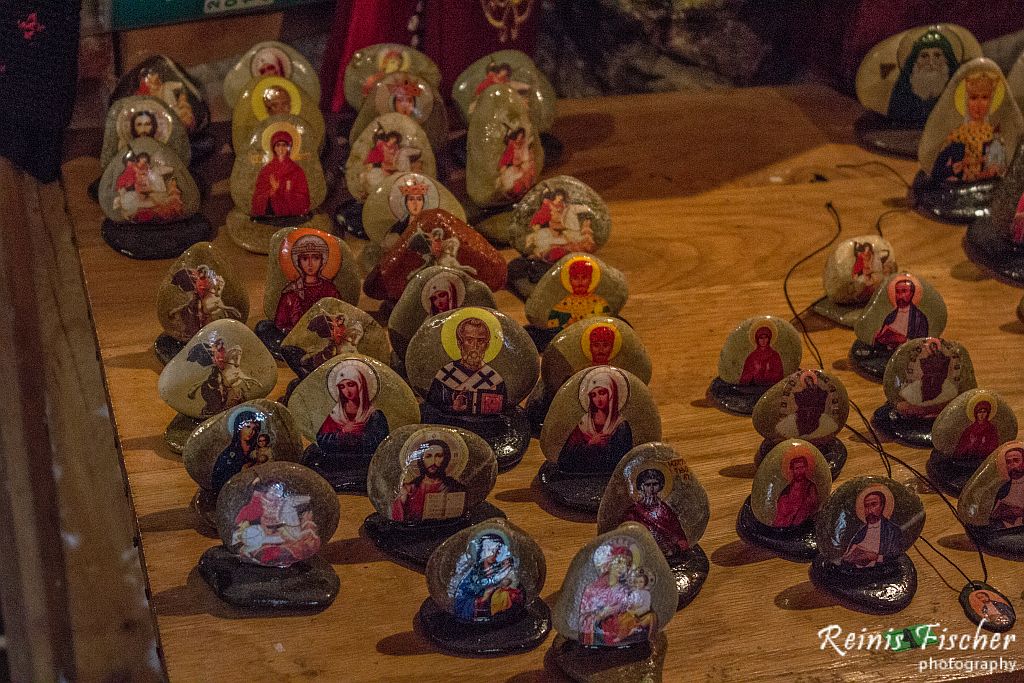
Church souvenirs for sale at Gremi monastery complex
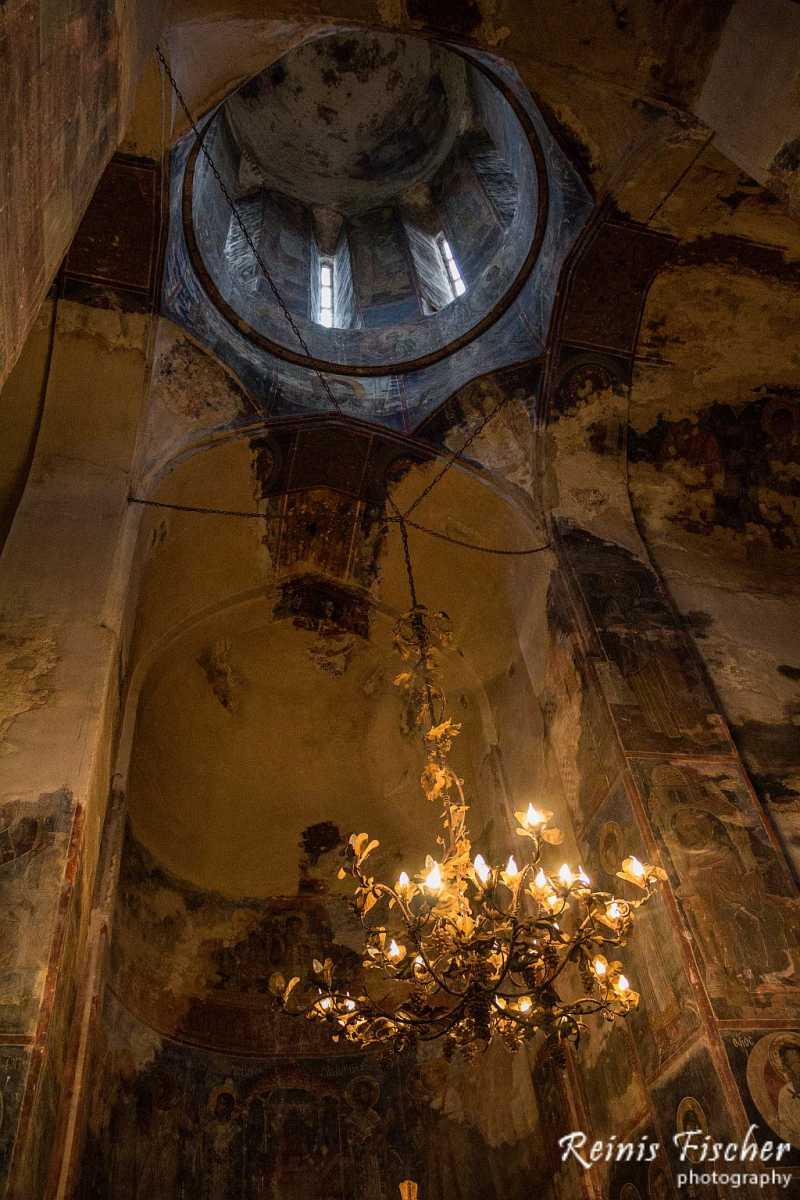
Inside Gremi Church
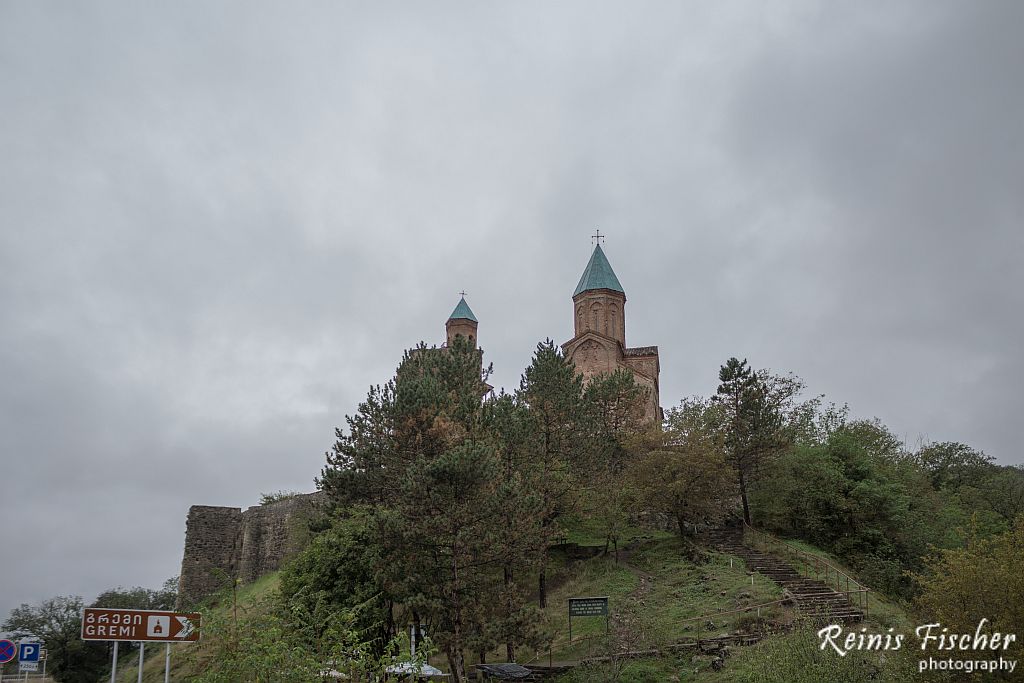
Gremi monastery complex from distance
About Gremi monastery complex:
Gremi is a 16th-century architectural monument – the royal citadel and the Church of the Archangels – in Kakheti, Georgia. The complex is what has survived from the once flourishing town of Gremi and is located east of the present-day village of the same name in the Kvareli district,
History
Gremi was the capital of the Kingdom of Kakheti in the 16th and 17th centuries. Founded by Levan of Kakheti, it functioned as a lively trading town on the Silk Road and royal residence until being razed to the ground by the armies of Shah Abbas I of Persiain 1615. The town never regained its past prosperity and the kings of Kakheti transferred their capital to Telavi in the mid-17th century. There was big Armenian population. The Russian diplomat Fedor Volkonsky, who was here in the 17th century, said: "Armenians have own church and market behind one was other church". He also said about 10 Armenian churches near the palace of king.
The town appears to have occupied the area of approximately 40 hectares and to have been composed of three principal parts – the Archangels’ Church complex, the royal residence and the commercial neighborhood. Systematic archaeological studies of the area guided by A. Mamulashvili and P. Zak’araia were carried out in 1939-1949 and 1963-1967, respectively. Since 2007, the monuments of Gremi have been proposed for inclusion into the UNESCO World Heritage Sites.
Architecture
The Archangels’ Church complex is located on a hill and composed of the Church of the Archangels Michael and Gabriel itself, a three-story castle, a bell tower and a wine cellar (marani). It is encircled by a wall secured by embrasures, turrets and towers. Remains of the secret tunnel leading to the Ints’obi River have also survived.
The Church of the Archangels was constructed at the behest of King Levan of Kakheti (r. 1520–1574) in 1565 and frescoed by 1577. It is a cruciform domed church built chiefly of stone. Its design marries traditional Georgian masonry with a local interpretation of the contemporary Iranian architectural taste. The building has three entrances, one facing west, one facing to the south, and the third facing to the north. The interior is crowned with a dome supported by the corners of the sanctuary and two basic piers. The façade is divided into three arched sections. The dome sits on an arcaded drum which is punctured by eight windows.
The bell-tower also houses a museum where several archaeological artifacts and the 16th-century cannon are displayed. The walls are adorned with a series of portraits of the kings of Kakheti by the modern Georgian painter Levan Chogoshvili (1985).
